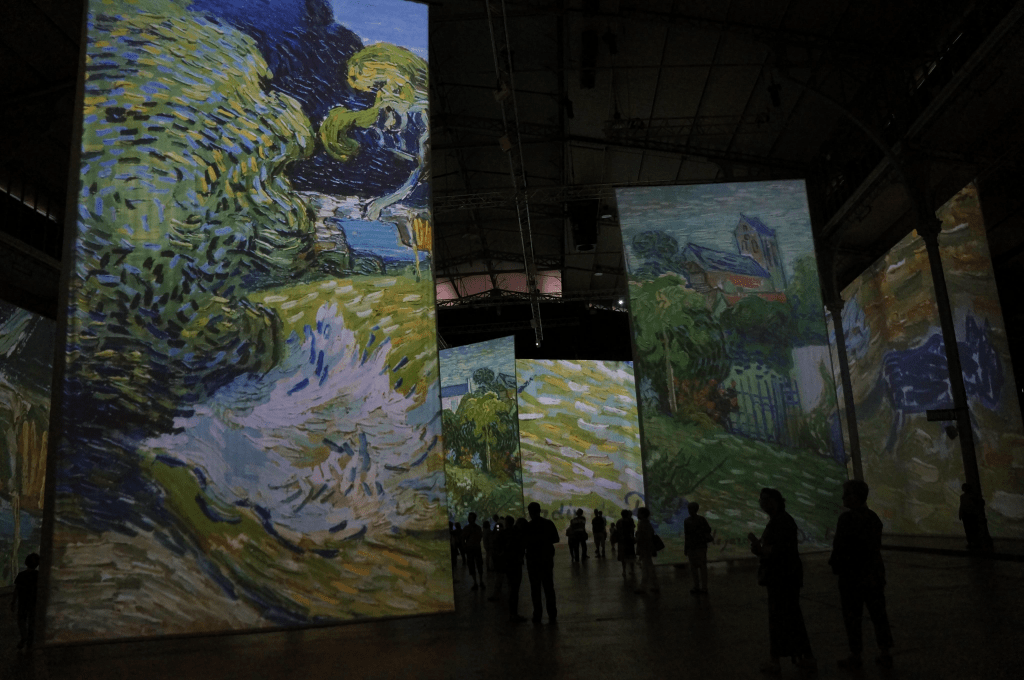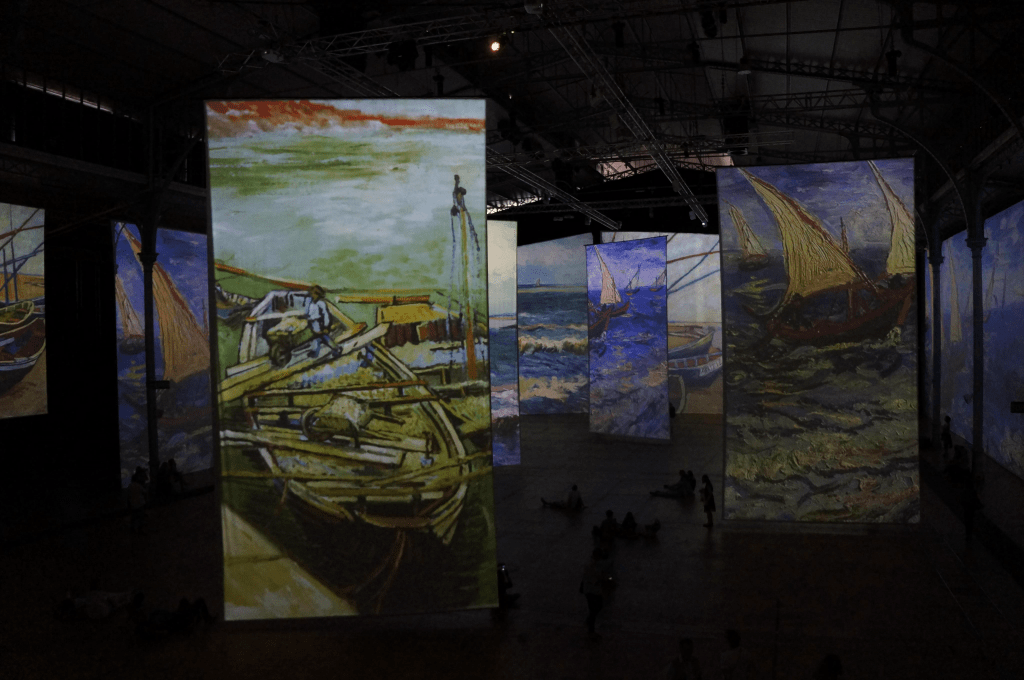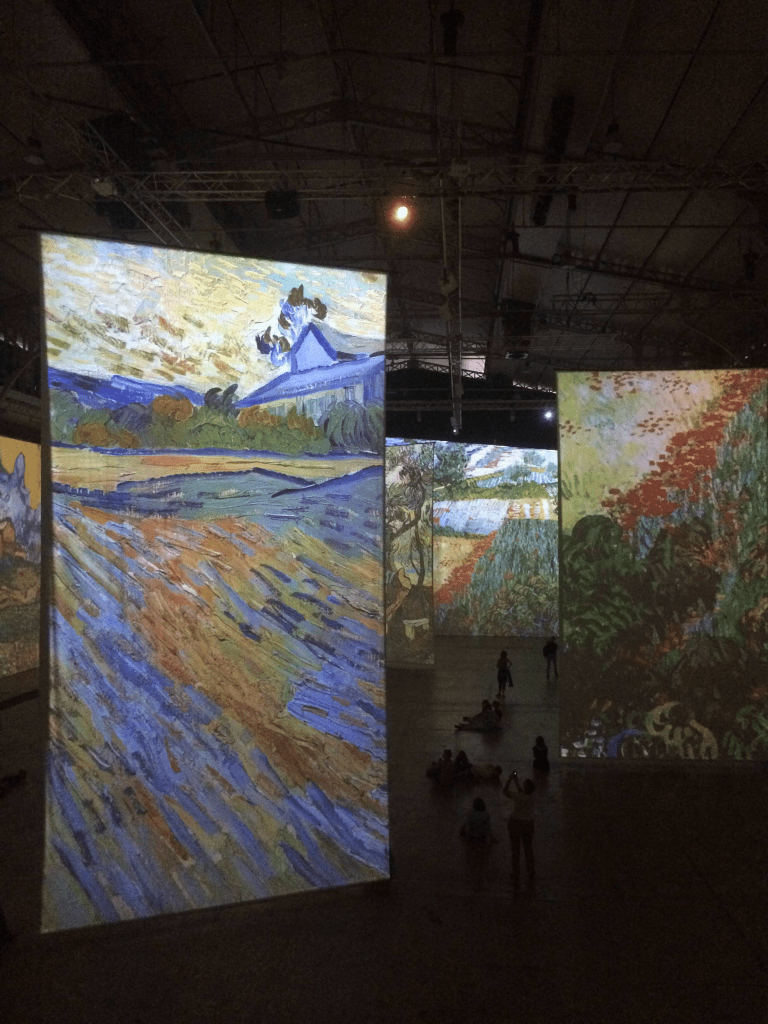It was only by chance that I stumbled upon a Van Gogh exhibition whilst in Paris this summer. Recommended to my friend and me by a fellow tourist, it felt like the perfect activity to fill our empty morning before our flight back home. Hidden away in the vast expanse of La Villette, a park in the north east of the city, ‘Imagine Van Gogh’ was a temporary gallery dedicated to seeing the artist’s work in a new way.
The attraction set me back around €12, a little pricey when you can step into The Louvre or the Musée d’Orsay for free. Once you purchase your ticket, you are shown into a very low-maintenance reception by some friendly security officers. There were black curtains dividing you from the edge of the exhibition, and there was nothing else in the room, save for a few tables and chairs. However, once you peel back the black curtain, the reason why you shelled out most of your daily budget on gallery sinks in — you’re met with art that you can interact with and experience in a new way.
From the huge ceilings hung large, rectangular projector screens, where Van Gogh’s artwork is displayed. It’s compilation of his work set to music, with the image changing every minute or so. Because of the projectors, the whole room is dark so that all you can see is the artwork, which removes you from the old warehouse and from Paris itself. When abroad, you’re usually hyperconscious of your environments. Here, it didn’t feel like abroad, nor did it feel like home. Ultimately, I think I felt that it didn’t really matter where I was. There was no one stood rigidly staring at the artwork from a set distance. Instead, people were lying down, seeing it up close or wandering around it normally, like it was aisle in a supermarket. Through presenting the art work this way, it’s a little like Van Gogh himself is showing you around his work, as opposed to locking it away on museum walls where you would stare at it like you stare at a television.
The directors of the exhibition wanted to use technology to place the viewer at the heart of the work. They wanted to remove them from your typical gallery environment and allow them to see Van Gogh in a relaxed and new way. As the viewer, you’re free to wander round and discuss the art as it’s happening in front of you. There’s also platforms where you can get a better view and see the art from up high. The music playing echoes the emotions in the brush strokes, letting you see more of what’s behind the piece. Seeing ‘Bedroom in Arles’ and ‘The Starry Night’ in huge dimensions transported me there, no longer having to be able to squint to see each of the dramatic brush strokes that are the basis of every picture.
Around the edges of the exhibition there were some panels of information about the artist. Even if you’re an ultimate fan of Van Gogh, there are still a few little pieces of information that you might not have picked up before. The panels detail the ins-and-outs of his life, ranging from how he gave his first sermon in in the Wesleyan Methodist church in Richmond to how he began painting, starting with portraits of Clasina Maria Hoornik, a prostitute.
There’s something exciting about seeing art in a new way, like this. To me, it definitely seems like the future of art. Seeing tens of people crowded around the Mona Lisa taking a photo of Da Vinci’s work for the sake of it really struck a contrast with this gallery, located just a few miles away in another part of the city. Art shouldn’t be a competition of who can get the most Instagram likes on a famous painting taken from a metre away. It should be being able to freely wander around a gallery, thinking and discussing the artworks, without needing to see it through a pixelated screen.
More information about the exhibition is here:
https://lavillette.com/evenement/imagine-van-gogh/



